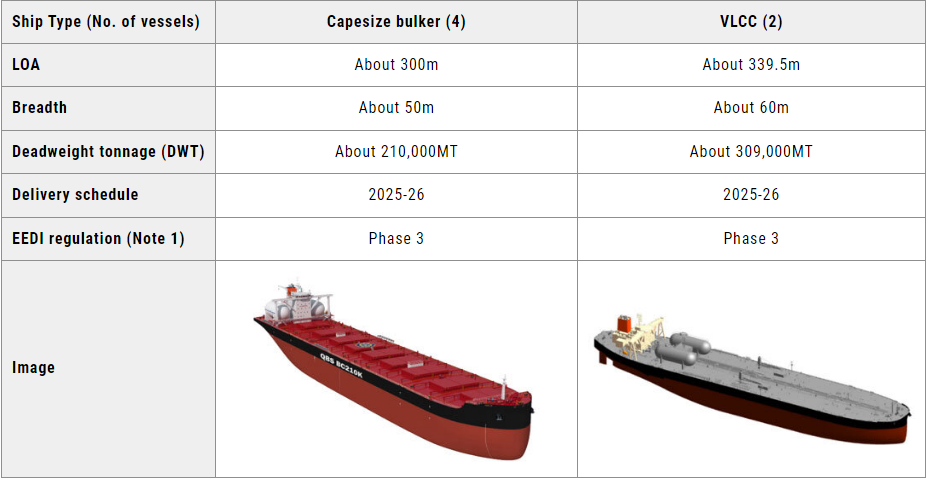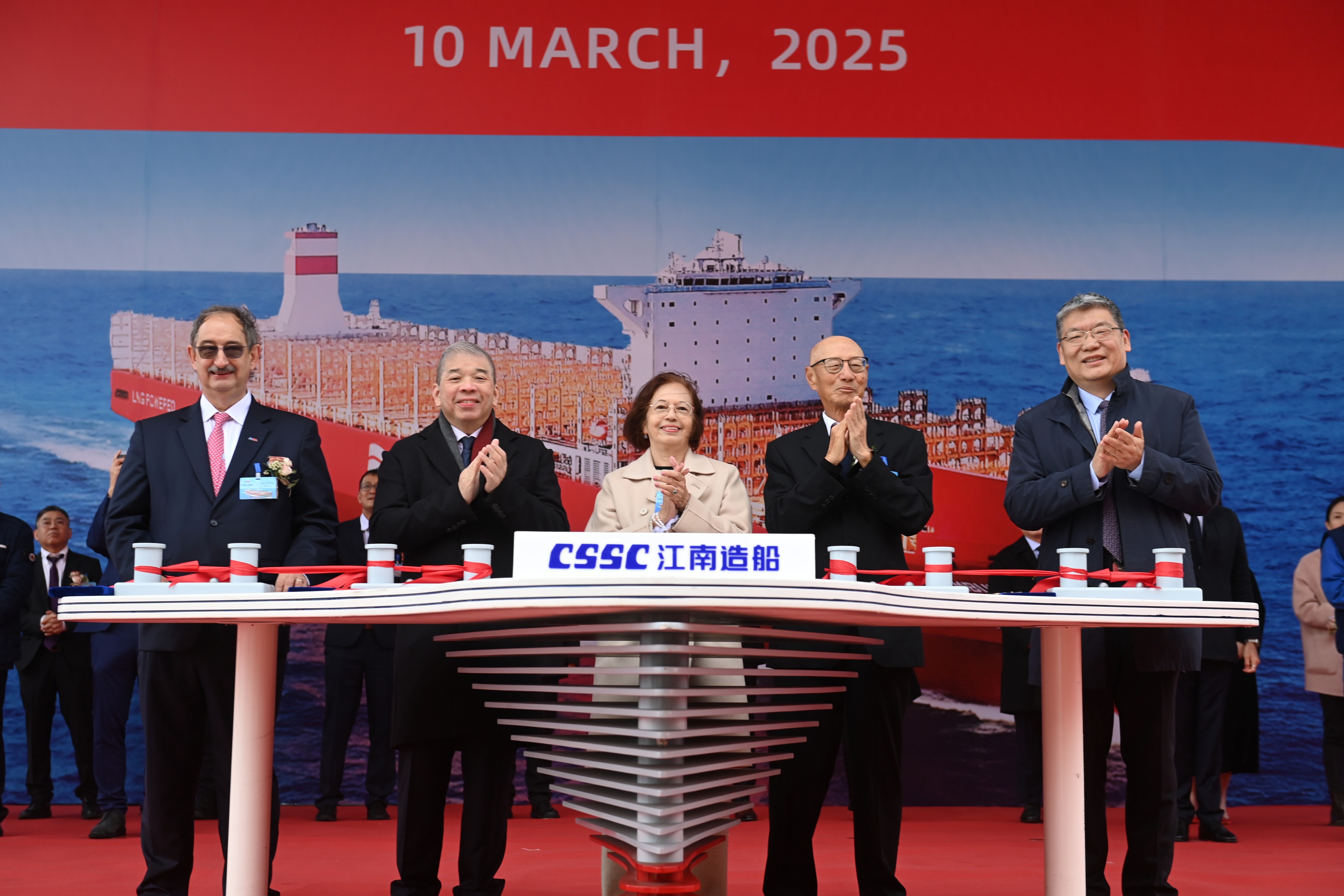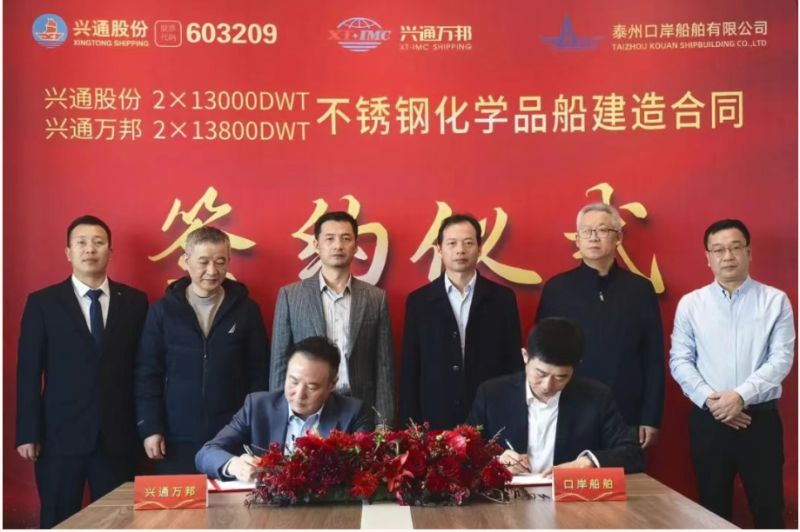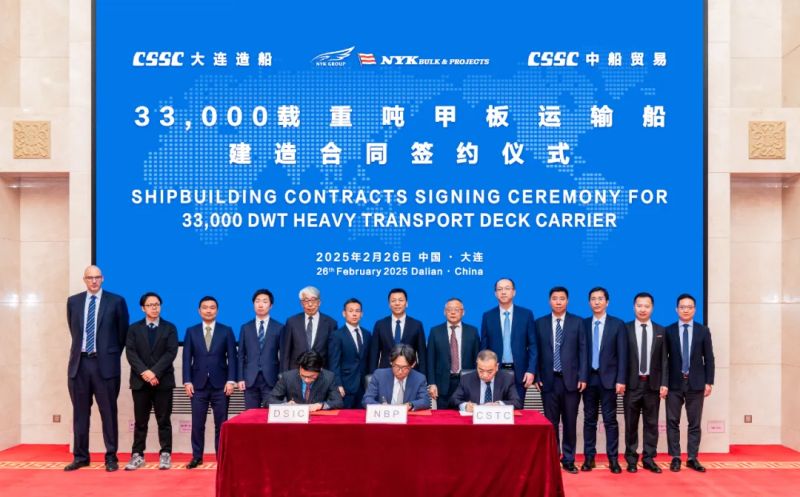MOL Signed for Six Large LNG-fueled Vessels with Chinese Shipyards - Steadily Progressing towards '90 LNG-fueled Vessels by 2030'
August 25, Tokyo - Mitsui O.S.K. Lines, Ltd. announced its intent to build four Capesize bulkers and two Very Large Crude Carrier (VLCC) tankers, which will use environment-friendly liquefied natural gas (LNG) as their main fuel, and signed deals for construction with shipbuilding companies.
The company signed a deal for construction of four 210,000 DWT-class Capesize bulkers with CSSC Qingdao Beihai Shipbuilding Co., Ltd. (Chairman: Chen Qing; headquarters: Qingdao, China). This is MOL's first time to order newbuilding vessel from this shipyard. The new ships are slated for delivery in succession from 2025 through 2026.
MOL also concluded a contract for construction of two 309,000 DWT-class VLCCs with Kawasaki Heavy Industries Ltd. (KHI; President: Yasuhiko Hashimoto; headquarters: Minato-ku, Tokyo). This new ordered VLCC will be built by Dalian COSCO KHI Ship Engineering Co., Ltd.(Headquarters: Dalian, China) jointly operated by KHI and China COSCO Shipping Corporation Limited. This is the first LNG-fueled VLCC ordered from a Japanese tanker operator. The newbuilding VLCCs are scheduled for delivery from 2025 through 2026.

The MOL Group has moved forward with de-carbonization/low carbonization in line with "
MOL Group Environmental Vision 2.1," established in June 2021, with the aim of achieving net zero greenhouse gas (GHG) emissions by 2050. It plans to expand its fleet of LNG-fueled vessels to about 90 by 2030, in line with the "adoption of clean alternative energy" strategy toward the goal of net zero GHG emissions.
Compared to conventional marine fuel oil, LNG is expected to reduce emissions of carbon dioxide (CO2) by about 25%-30% and other GHG emissions. It has advanced the adoption of LNG-fueled vessels as a currently feasible initiative on reducing GHG emissions. LNG can be substituted with a view to shifting toward synthetic methane produced using renewable energy sources, which can significantly reduce GHG emissions. MOL aims to further reduce GHG emissions by adopting LNG-fueled vessels as a transition towards the aim of Net Zero Emission by 2050.
MOL Group has ordered 16 ocean-going LNG-fueled vessels which includes these Capesize bulkers and VLCCs, in addition to car carriers, bulkers, and six coastal vessels which are ferries, tugboat, and coastal cargo vessel. It will further continue to widen the use of LNG fuel as an initiative that it can take now, to accelerate toward the complete elimination of GHG emissions.
Source: MOL
The opinions expressed herein are the author's and not necessarily those of The Xinde Marine News.
Please Contact Us at:
media@xindemarin

 World’s Largest Pulp Carrier Delivered 213 Days
World’s Largest Pulp Carrier Delivered 213 Days  Danelec Expands High-Frequency Data Installed-Base
Danelec Expands High-Frequency Data Installed-Base  World’s Largest LNG Dual-Fuel Container Ship Triu
World’s Largest LNG Dual-Fuel Container Ship Triu  PIL advances fleet renewal with the naming of its f
PIL advances fleet renewal with the naming of its f  Xing Tong Shipping Orders four 13,000 DWT stainless
Xing Tong Shipping Orders four 13,000 DWT stainless  Breaking New Ground in Maritime Excellence: DSIC &a
Breaking New Ground in Maritime Excellence: DSIC &a